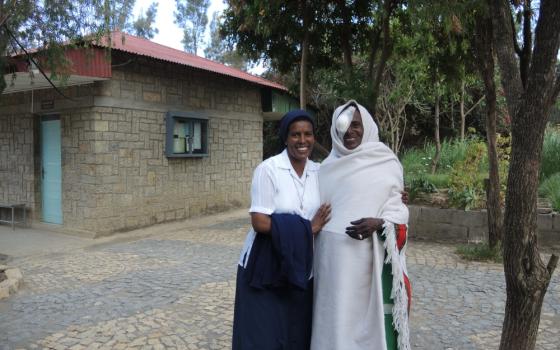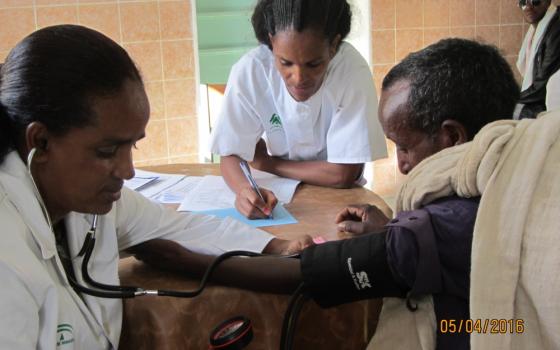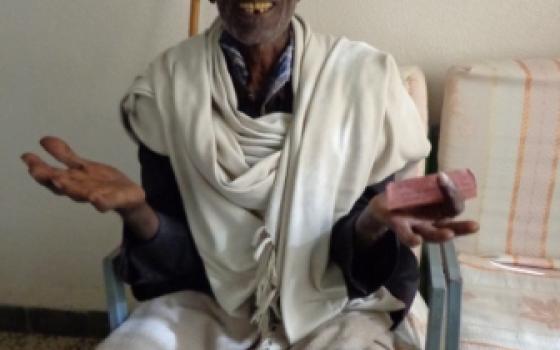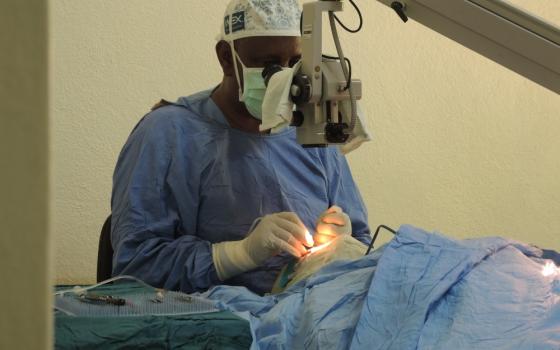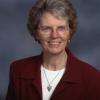By 6:30 in the morning, the doors of St. Louise Eye Clinic in Mekelle, Tigray region of Ethiopia are wide open for service. People of all ages are lined up waiting their turn for examinations or procedures at this clinic run by the Daughters of Charity. Sister Hiwot, director of the clinic, has organized the program of Dr. Vito Mariella, a Spanish eye surgeon and Dr. Berrhan Mekonnen, an Ethiopian cataract surgeon on staff for their long day's work. Dr. Mariella is a volunteer from Proyecto Vision, a Spanish organization that rotates eight teams of ophthalmologists every four weeks to the clinic. It is such a popular place for the volunteers that one of them has come 22 times to work with the sisters.
Proyetcto Vision has partnered with St. Louise Eye Clinic for many years, and as Sister Hiwot toured me around the facilities she pointed out the operating rooms and a sterilization center they have provided. Along with doctors and equipment, the organization sometimes sponsors children with special problems for treatment in Spain so that appropriate follow up can be monitored. Along with doing surgery procedures, the volunteer doctors also train local staff in best practices of assisting and also in using the equipment.
Proyecto Vision also partnered with nearby Quiha Public Hospital by building a residence for 10 students to enroll in an Ophthalmologic Medical Assistant degree program. After graduation and two years of experience, the students can join a master's course in cataract surgery. There are three other such schools in the country, but it is very difficult to get placement as the sisters have found. So, graduates are not numerous.
According to Gondar Ethiopia Eye Surgery (GEES), Ethiopia trains four to seven surgeons a year, but they are often recruited from outside the country. There are more Ethiopian eye surgeons in Washington, D.C., than in Ethiopia. This leaves the population extremely underserved, sometimes only one or two surgeons for 4 million people.
The leading cause of blindness in Ethiopia is cataracts, and 80 percent of St. Louise Clinic patients come for this surgery, a life-changing procedure. Shake Mushah, 60,found this to be true. He lives in Raya Azebo, about 50 miles away from St. Louise Clinic. He noticed that his sight was deteriorating in both his eyes and at his age, he found the change frightening.
He said, "Back at home, I shared my problem and my worries of becoming blind with my brother, and my brother told me that there is a clinic in Mekelle by the name 'Adi Haki' (sisters' clinic). It provides very good treatment: 'Go there and you will be cured and will be able to see clearly again.' He warned me not to go anywhere else."
While he was waiting to go, a cataract surgeon and staff from St. Louise made one of their outreach visits to Raya Azeb, and Shake Mushah was screened. He had cataracts on both his eyes and was literally going blind. The doctor set up an appointment for him at St. Louise clinic where he later had surgery. It was like a miracle for him to have his sight back. He returned to the clinic sometime later and contributed 20 Birr to help others to have the same advantage.
"I was living in the dark and it was frightening," he said. "Now I can see the light, thanks to you all in this clinic and all those who help you. You are all light for the world."
On my visit I was privileged and surprised to be invited to watch a local surgeon perform a cataract procedure which delighted me, having gone through it myself a year ago.
Eye care is a major health issue throughout developing countries where 90 percent blindness is reported. Ethiopia has the reputation of having the highest rate of blindness and impaired vision, and unfortunately, 80 percent of it is believed to be preventable or curable. According to GEES, 1.6 percent of the population is blind — 250,000 people.
The majority of eye disease is found in rural areas where climate, poor ventilation, overcrowding and close proximity to livestock are contributing factors. Women are most affected either due to their work in smoky, wood-burning kitchens or because they have less access to eye care than men, due to their place in society. Illiteracy prevents ability to read instructional materials and slows down education about eye care. Lack of adequate clean water and sanitation also contribute to diseases as does lack of income, a situation exacerbated when the blind person in the family cannot work. Caring for dependent family members can also keep people from full-time employment, again making access to care almost economically impossible. The expense of travel to larger cities where the majority of doctors work can also prevent needed care.
Incidence of trachoma is the second highest eye disease in Ethiopia and is particularly prevalent among children ages 1-9 years. Trachoma is an infection caused by flies moving from one person to another, and children are most vulnerable. A second cause is lack of clean water for face washing. Education about these causes is the preventive measure the sisters use to eliminate the disease. They engage in both outreach programs in rural villages and in local schools. This last year over 8,000 students received screening and eye care. Screenings and teaching the importance of Vitamin A nutrition, face washing and environmental sanitation are the focus of the education. Besides offering education for prevention, the sisters also have schools for children who have become blind.
St. Louise Clinic is part of the National Program Vision 20/20, launched in 2002, a program to develop sustainable and comprehensive eye health care systems throughout the country. It is not an easy goal for the sisters. Sister Hiwot showed me the pharmacy where a few medicines were stacked on shelves, but many more are needed. Some are donated, but tariffs are very expensive; others bought into the country are also expensive. She then showed me her small collection of eye glasses lamenting how difficult it is to get these as well. Most have to be imported because there is no industry in Ethiopia that manufactures eyewear.
I was curious to know how the sisters became so deeply involved in eye care because it seemed such a specialized service. The clinic in Mekelle was founded by the Swiss Mission from Geneva to address the serious trachoma issue in Ethiopia. In 1984, however, the mission found it necessary to leave Ethiopia and asked the Daughters of Charity to take on the eye clinic. In 1986 the sisters were able to establish a partnership with Christoffel Blindenmission (CBM) founded in Germany in1906 to help support this new work. CBM currently provides medicines, supplies, equipment and some financial resources. It also sent a doctor for one year in 1993 because of the scarcity of ophthalmologists. Unfortunately, the scarcity remains and in addition, it is becoming more difficult to obtain licenses for expatriate professionals.
I asked her about the possibility of all sisters' eye clinics in the country organizing themselves in order to have greater voice in procuring the medicines and equipment needed. She told me that at the moment there is not much interaction or sharing among the sisters' congregations. She mentioned three hospitals and one health center managed by different sisters' congregations and one hospital managed by a brother. They have eye care units, but only the Daughters of Charity have two specialized eye institutions in Ethiopia. She has also tried to collaborate with other groups in the country that are engaged in eye care, but has been unsuccessful.
So, what is the future sustainability of this service in this region of Ethiopia, a question on all donors' minds? Sister Hiwot identified some of them, with quality service as number one. She also realizes that local donors need to be tapped because international sources are decreasing and collaboration with other groups to address the issues of blindness and limited vision together is imperative. The government also needs to recognize the services of the sisters and assist rather than add obstacles to providing these needed services for the Ethiopian people.
[Joyce Meyer, PBVM, is international liaison to women religious outside of the United States for Global Sisters Report.]
